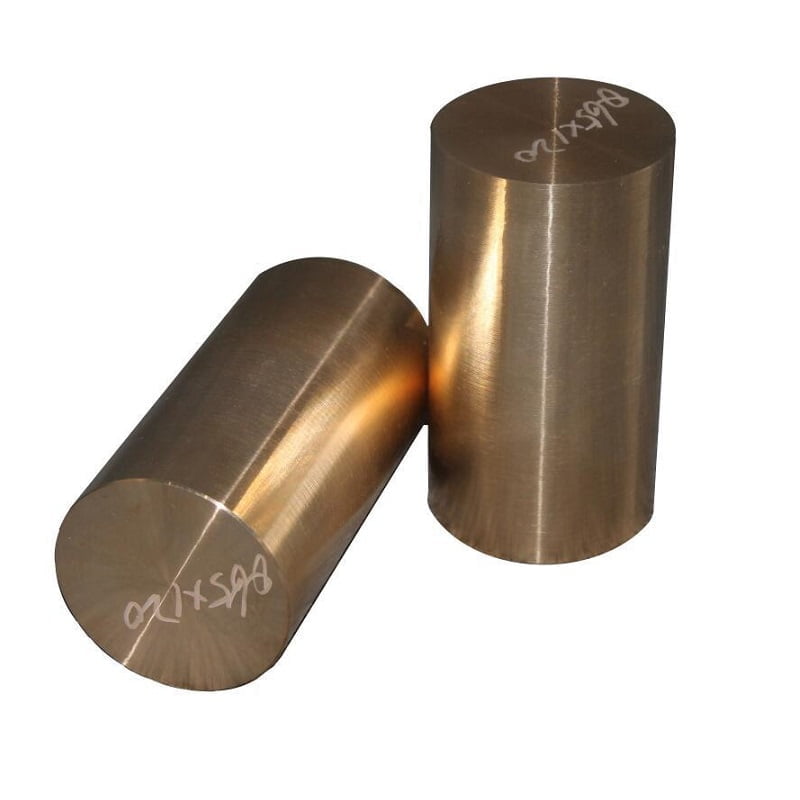Composition et calcul du prix en cuivre du béryllium

Alliages de cuivre de béryllium, comme C17200, sont évalués pour leur combinaison unique de propriétés, qui comprennent une résistance élevée, une conductivité et une résistance à la corrosion. Le prix du cuivre de béryllium est influencé par plusieurs facteurs, notamment les prix actuels du marché du cuivre et du béryllium, la composition en alliage, les processus de fabrication et la demande du marché. Cet article donne un aperçu de la composition des alliages de cuivre de béryllium et explique comment les prix sont calculés en fonction de ces facteurs.
Composition d'alliages de cuivre de béryllium
Les alliages de cuivre de béryllium se composent généralement de cuivre comme le métal de base allié avec un petit pourcentage de béryllium. La composition exacte peut varier en fonction de la note d'alliage spécifique et de son application prévue. La composition du cuivre de béryllium C17200, par exemple, est le suivant:
| Élément | Pourcentage |
|---|---|
| Cuivre | 98,1% |
| Béryllium (Be) | 1,9% |
En plus du cuivre et du béryllium, de petites quantités d'autres éléments tels que le cobalt, le nickel et parfois le fer peuvent être présentes pour améliorer davantage des propriétés spécifiques comme la résistance ou la résistance à la corrosion. Cependant, le cuivre et le béryllium sont les principaux éléments qui définissent les caractéristiques de l'alliage.
Facteurs influençant les prix du cuivre du béryllium
- Prix du marché du cuivre et du béryllium: Les prix des produits de cuivre et de béryllium sur le marché mondial ont un impact direct sur le coût des alliages de cuivre de béryllium. Ces prix peuvent fluctuer en fonction de la dynamique de l'offre et de la demande, des facteurs géopolitiques et des conditions économiques.
- Composition de l'alliage: Différentes notes d'alliages de cuivre de béryllium peuvent avoir des compositions variables pour répondre aux exigences de performance spécifiques. Une teneur plus élevée au béryllium augmente généralement la force et la dureté de l'alliage, mais contribue également à des coûts de matériaux plus élevés.
- Processus de fabrication: Les processus de fabrication impliqués dans la production d'alliages de cuivre de béryllium, tels que la fusion, la coulée et le traitement thermique, affectent les coûts de production. Des alliages complexes ou des formulaires spécialisés (par exemple, des tiges, des barres, des feuilles) peuvent nécessiter des étapes de traitement supplémentaires qui influencent le prix final.
- Demande et application du marché: La demande d'alliages de cuivre de béryllium dans toutes les industries (par exemple, l'électronique, l'aérospatiale, l'automobile) peut avoir un impact sur les prix. Une forte demande de notes ou de demandes spécifiques peut entraîner des augmentations de prix en raison de l'offre limitée ou de l'augmentation des coûts de production.
Calcul du prix en cuivre du béryllium
Le prix des alliages de cuivre de béryllium est généralement calculé sur la base des facteurs suivants:
- Prix de base en métal: Commencez par les prix actuels du marché du cuivre et du béryllium, qui sont souvent cités par tonne métrique ou livre.
- Composition de l'alliage: Déterminez la composition en alliage (par exemple, pourcentage de cuivre et de béryllium) et ajuster le calcul des prix en conséquence. Par exemple, un contenu plus élevé de béryllium contribuerait davantage au coût de l'alliage.
- Coûts de traitement et de fabrication: Tenez compte des coûts associés aux processus de fabrication, y compris la manutention des matériaux, la fusion, l'alliage, la mise en forme et la finition.
- Facteurs du marché: Facteur dans les conditions du marché, telles que les perturbations de la chaîne d'approvisionnement, les tarifs et les fluctuations de la monnaie, ce qui peut avoir un impact sur les coûts des matières premières et les prix globaux.
Exemple de calcul:
Pour illustrer, considérons un calcul hypothétique pour le prix de Beryllium Copper C17200:
Prix du marché (à partir du calcul):
- Prix du cuivre: 9 000 $ par tonne métrique
- Prix du béryllium: 70 000 $ par tonne métrique
Composition:
- Cuivre (avec): 98,1%
- Beryllium (be): 1,9%
Calcul:
- Calculez la contribution des coûts de chaque élément en fonction de son pourcentage dans l'alliage:
- Coût du cuivre = 98,1% × 9 000 $ = 8 829 $ par tonne métrique
- Coût du béryllium = 1,9% × 70 000 $ = 1 330 $ par tonne métrique
Coût total d'alliage:
- Coût total d'alliage par tonne métrique = coût du cuivre + coût du béryllium
- Coût total d'alliage = 8 829 $ + 1 330 $ = 10 159 $ par tonne métrique
Coûts supplémentaires:
- Incluez des coûts de fabrication supplémentaires, des frais généraux et des marges bénéficiaires pour déterminer le prix de vente final en fonction des conditions du marché et des normes de l'industrie.
Conclusion
Le prix des alliages de cuivre de béryllium comme C17200 est déterminé par divers facteurs, notamment la composition du cuivre et du béryllium, les prix du marché des métaux de base, les processus de fabrication et la demande du marché. La compréhension de ces facteurs est essentielle pour les parties prenantes dans les industries qui s'appuient sur les alliages de cuivre du béryllium, fournissant un aperçu des stratégies de gestion des coûts et d'approvisionnement.
Pour des prix et des achats précis, les entreprises consultent souvent les fournisseurs et les experts de l'industrie pour naviguer dans les fluctuations du marché et garantir des stratégies de prix compétitives alignées sur leurs besoins opérationnels.
Cet article a visé à élucider les mécanismes de composition et de tarification des alliages de cuivre du béryllium, en utilisant des tables claires pour améliorer la compréhension et fournir un aperçu complet des parties prenantes dans les industries pertinentes.
